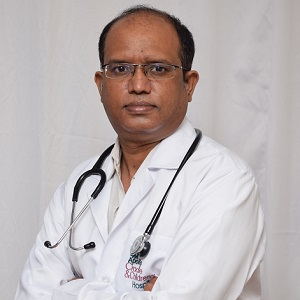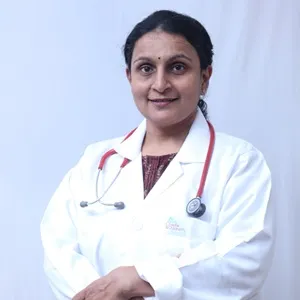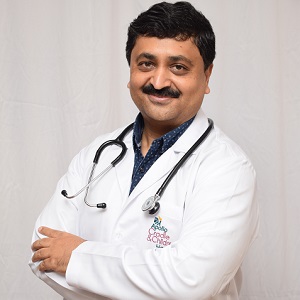What is Paediatric Orthopaedics?
Paediatric orthopaedics is a subspecialty of orthopaedics that focuses on the diagnosis, treatment, and management of musculoskeletal (joints, muscles, and bones) problems in children and adolescents. It covers a wide range of conditions, including congenital disorders, developmental disorders, bone and joint infections, fractures, spinal disorders, and sports injuries.
Types of paediatric orthopaedic conditions
Congenital Disorders: These are conditions that a child is born with, such as clubfoot, hip dysplasia, and scoliosis.
Trauma-related injuries: These are injuries that occur as a result of an accident or fall, such as fractures, dislocations, and sprains.
Developmental Disorders: These are conditions that affect the growth and development of bones and joints, such as osteogenesis imperfecta (brittle bone disease) and juvenile idiopathic arthritis (JIA).
Neuromuscular Disorders: These are conditions that affect the nervous system and muscles, such as cerebral palsy and muscular dystrophy.
Infections: These are infections that affect bones and joints, such as osteomyelitis and septic arthritis.
Tumours: These are abnormal growths of cells in bones and soft tissue, such as osteosarcoma and Ewing's sarcoma.
Sports injuries: These are injuries that occur as a result of participating in sports, such as stress fractures and ligament injuries.
Symptoms
The symptoms of paediatric orthopaedic conditions can vary widely, depending on the specific condition. Some common symptoms include mild to severe pain in one or multiple joints; swelling in the affected joint accompanied by redness and warmth; walking with a limp or difficulty walking; deformity such as a curvature of the spine in scoliosis; weakness in the affected limb(s); and stiffness in the affected joint(s).
Causes
Genetics: Some conditions, such as hip dysplasia and scoliosis, can be inherited.
Premature birth: Children born prematurely may have a higher risk of developing certain orthopaedic conditions.
Neuromuscular disorders: Children with conditions such as cerebral palsy and muscular dystrophy have an increased risk of developing orthopaedic problems.
Trauma: Children who have suffered a traumatic injury, such as a fall or car accident, have an increased risk of developing orthopaedic problems.
Overuse: Children who participate in repetitive and high-impact sports, such as running and gymnastics, have an increased risk of developing overuse injuries.
Infections: Children with infections such as osteomyelitis and septic arthritis have an increased risk of developing orthopaedic problems.
It is important to note that many paediatric orthopaedic conditions are caused by a combination of genetic and environmental factors. A specialist can help determine the specific cause of a child's condition and develop an appropriate treatment plan.
Treatment
Physical therapy: Physical therapy can help children improve their strength, flexibility, and range of motion and can also help reduce pain.
Medications: Anti-inflammatory medications, such as ibuprofen, can help reduce pain and swelling. Other medications, such as pain relievers and muscle relaxants, may also be used.
Bracing: Bracing can help support the affected joint(s) and reduce pain.
Casting: A cast can be used to keep the injured limb from moving so that it can heal properly.
Surgery: In some cases, surgery may be necessary to correct a deformity, repair a damaged joint, or relieve pressure on a nerve.
Assistive devices: Children with certain conditions may benefit from using assistive devices, such as crutches, canes, or wheelchairs.
Diagnosis
Physical examination to look for signs of pain, swelling, deformity, and weakness; X-rays for fractures, dislocations, and other problems with the bones and joints; magnetic resonance imaging (MRI); a computed tomography (CT) scan; ultrasound for detailed images of the bones and soft tissues; and blood tests to determine an infection or other underlying medical condition that may be causing the orthopaedic symptoms are all methods of diagnosis.
Request an appointment at Apollo Cradle, Bengaluru - Jayanagar. Call 1860-500-4424 to book an appointment.
Yes, pediatric orthopedic conditions are common and can affect children of all ages.
Some conditions are caused by genetic or congenital factors that cannot be prevented. However, there are some key steps that can be taken to lower the risk of developing certain conditions, such as keeping a healthy weight, being physically active regularly, wearing the right shoes, and using the right form and technique when playing sports or doing other physical activities.
It is also important for children to receive regular check-ups and to seek medical attention if they experience any pain or discomfort in their bones or joints. Early treatment and diagnosis can help improve outcomes and lower the risk of long-term problems.
To determine if surgery is the best option, the pediatric orthopedist will consider the child's specific needs as well as their age, overall health, and severity of symptoms.
For some, recovery takes a few weeks. For others, it can take several months. Depending on your overall health, the condition for which you were treated, and the type of surgery performed, you may be able to go home the same day or the day after surgery, even if you had total joint replacement surgery.
Our Doctors
Treatments
- Anaesthesia & Pain Management
- General Pediatrics
- Growth Chart
- Newborn Screening
- Pediatric Allergy
- Pediatric Dermatology
- Pediatric Endocrinology
- Pediatric Nutrition
- Pediatric Orthopedics
- Pediatric Psychology
- Pediatric Surgery & Urology
- ROP Screening
- Stem Cell banking
- Vaccination/Immunisation Schedule

 93% Patient Satisfaction Score
93% Patient Satisfaction Score




